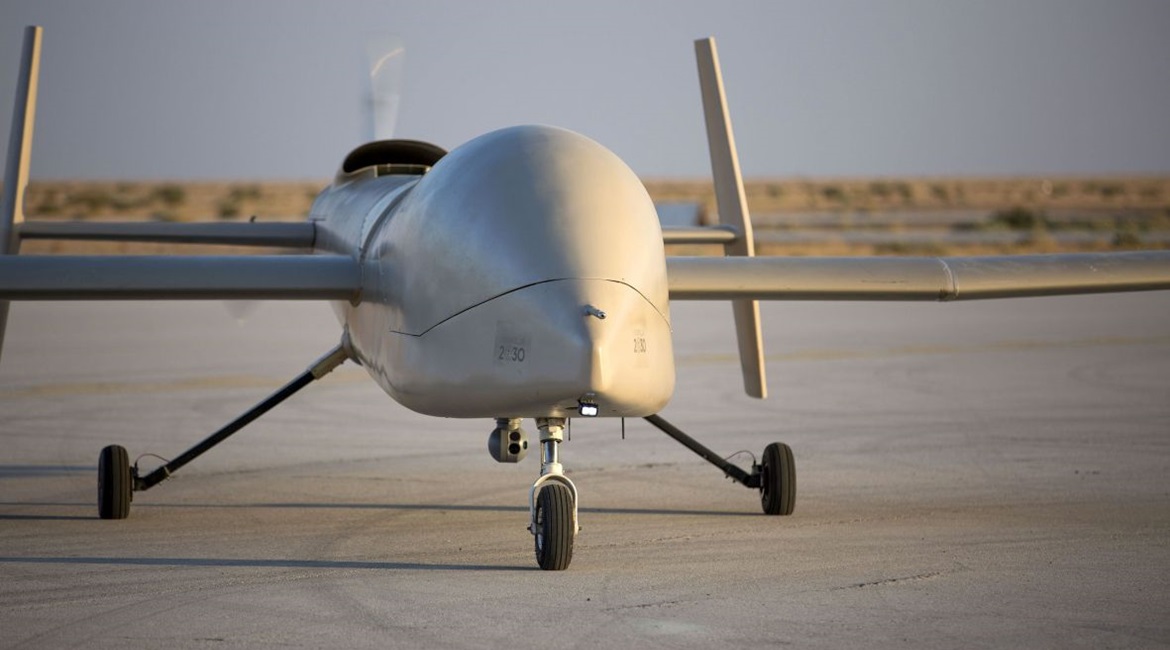
UAVOS and the King Abdulaziz City for Science and Technology (KACST) in Saudi Arabia have created a new medium-altitude long-endurance (MALE) unmanned aerial vehicle (UAV) that features fully-autonomous operational capability.
The Saker-1B is derived from a 10-year research and development (R&D) effort between UAVOS and the KACST to develop a flight-control system (FCS) designed for multimission, multi-domain UAV platforms. The two stakeholders have completed flight tests of the Saker-1B in Saudi Arabia to verify the autonomous online and offline operation of the aircraft from takeoff to landing, according to a UAVOS statement.

UAVOS and King Abdulaziz City for Science and Technology (KACST) in Saudi Arabia have developed the Saker-1B MALE UAV. It can fly for more than 19 hours at an altitude of up to 16,500 ft with a range of 2,600 km. (UAVOS)
The aircraft performed a series of heavy weight landing tests with a maximum take-off weight (MTOW) of 1,100 kg. Multiple different payloads were tested in surveillance experimental missions to confirm overall system performance. The Saker-1B uses a direct radio link when flying within line of sight (LOS) and switches to a satellite link for beyond line-of-sight (BLOS) missions.
The Saker-1B can fly for more than 19 hours at an altitude of up to 16,500 ft with a range of 2,600 km. The aircraft has flown more than 500 hours of both day and night test missions under various weather conditions. It has also performed more than 1,000 hours of take-off and landing test missions.
Aliaksei Stratsilatau, UAVOS CEO and lead developer, told Jane’s on 5 March that three prototypes of the Saker-1B have been manufactured. The KACST is handling sales of the aircraft, he said.
Looking to read the full article?
Gain unlimited access to Janes news and more...






